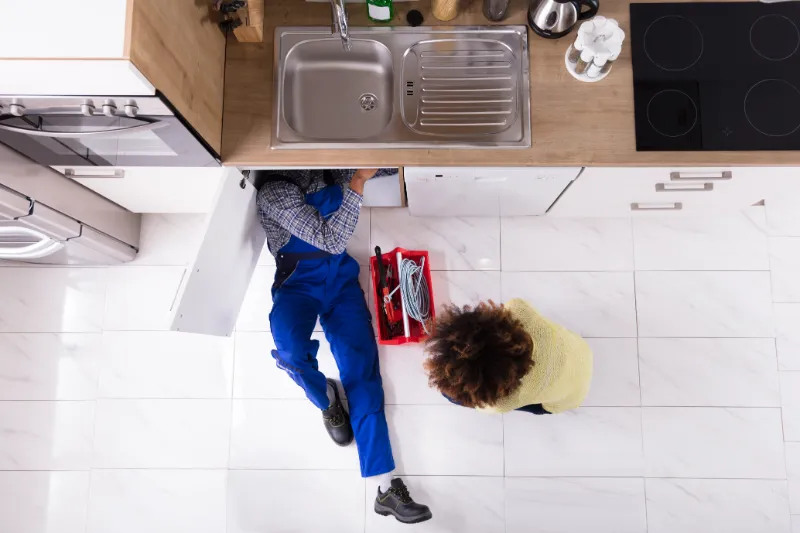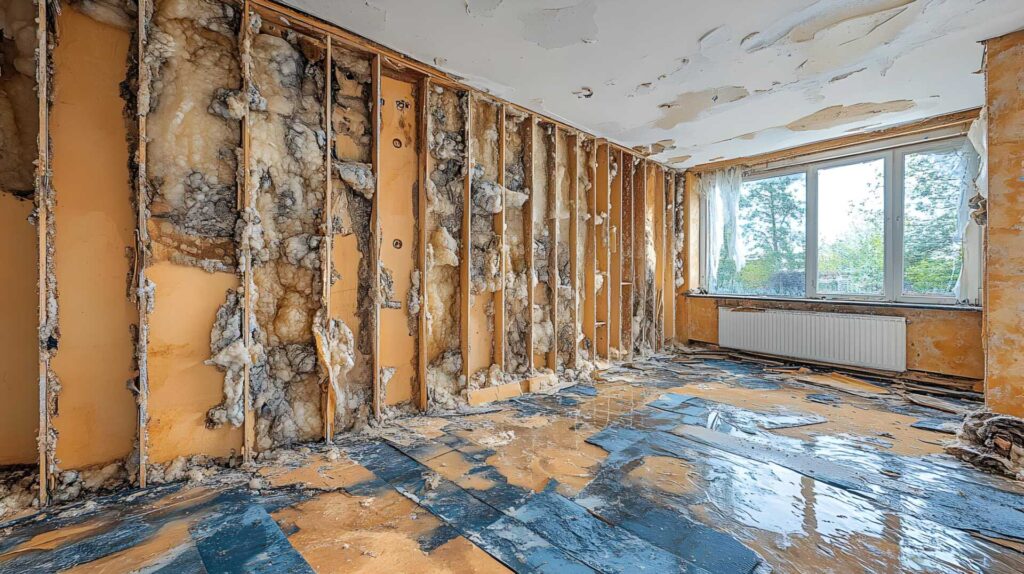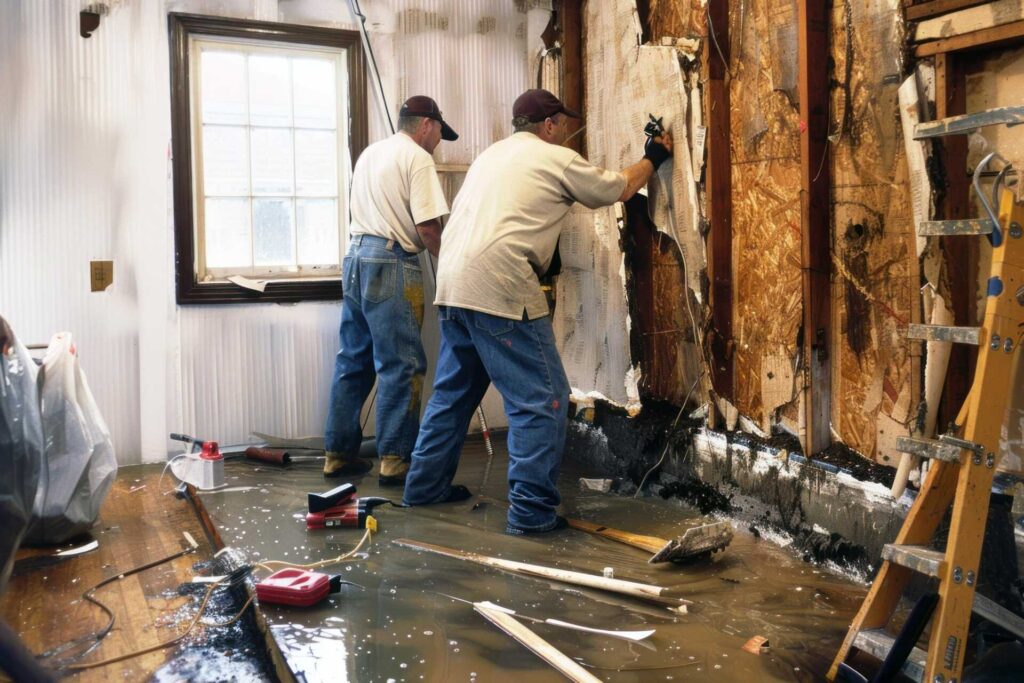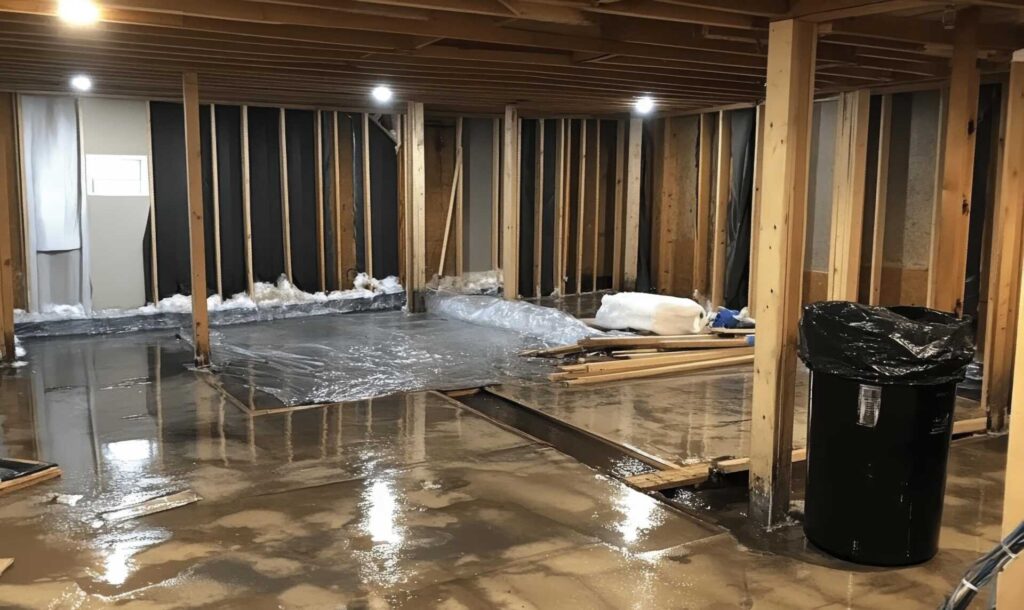Contents
Key Takeaways
- Obtaining necessary permits and compliance is crucial before starting any plumbing project to ensure adherence to building codes and regulations.
- Assessing plumbing requirements and codes involves conducting a thorough inspection, calculating water demand, and evaluating local plumbing codes for safety and functionality.
- Planning the layout and materials includes determining fixture locations, considering existing plumbing infrastructure, and consulting with professionals for guidance.
- Preparing the work area and gathering essential tools is important to ensure a smooth installation process, including clearing the workspace, protecting surfaces, and ensuring proper ventilation.
Obtaining Necessary Permits
Before you begin any rough in plumbing work, you need to obtain the necessary permits. It’s an essential step in ensuring that your project complies with local building codes and regulations. Obtaining permits not only keeps you on the right side of the law but also ensures the safety of your clients and the overall integrity of the plumbing system.
To obtain the necessary permits, you’ll need to visit your local building department or permitting office. They’ll guide you through the application process and provide you with the required paperwork. Be prepared to provide detailed information about the scope of your plumbing project, including the location, size, and materials you plan to use.
It’s crucial to be proactive in obtaining the permits, as starting work without them can lead to fines, penalties, and even having to undo the work you’ve already done. By obtaining the necessary permits, you demonstrate your commitment to professionalism and adherence to regulations.
Remember, serving others in the plumbing industry means prioritizing safety and following the rules. By obtaining permits, you protect your clients’ interests and ensure the work you do meets all necessary standards.
Assessing Plumbing Requirements
What should be installed first when plumbing a building? To properly assess the plumbing requirements, you’ll need to start by determining the specific needs and specifications of the project. Here are four key steps to help you in this process:
- Conduct a thorough inspection: Begin by thoroughly inspecting the area where the plumbing work needs to be done. Look for existing plumbing systems, water supply lines, and drainage systems. Assess the condition of the pipes, fittings, and fixtures to determine if any repairs or replacements are necessary.
- Consider the project scope: Determine the scope of the plumbing project. Will it involve new construction or renovations? Are there any specific plumbing fixtures or appliances that need to be installed? Understanding the overall scope of the project will help you determine the quantity and type of materials required.
- Calculate water demand: Assess the water demand of the project. Consider factors such as the number of occupants, usage patterns, and peak flow requirements. This will help you determine the appropriate pipe sizes and ensure that the plumbing system can handle the expected water demand efficiently.
- Evaluate code and regulations: Familiarize yourself with the local plumbing codes and regulations. Ensure that your plumbing design and installation comply with these requirements. This will help you avoid any potential legal issues and ensure the safety and functionality of the plumbing system.
Planning the Layout
What important considerations should you keep in mind when planning the layout for your plumbing project?
Planning the layout for your plumbing project is a crucial step in ensuring a successful and efficient system. As you embark on this task, there are several important considerations to keep in mind.
Firstly, you need to determine the optimal location for fixtures such as sinks, toilets, and showers. Consider the functionality and convenience of each fixture, ensuring that they’re easily accessible and strategically placed. Additionally, take into account the existing plumbing infrastructure and the path the pipes will need to take to connect to the fixtures.
Next, consider the size and layout of the space you’re working with. Take accurate measurements of the area to determine how much space you have to work with and to ensure that the fixtures will fit properly. Consider the flow of the space and how the plumbing will integrate seamlessly with the overall design.
Another important consideration is the type of materials you’ll be using for the plumbing system. Choose high-quality materials that are durable and resistant to corrosion. Additionally, consider the cost and availability of these materials to ensure that they fit within your budget.
Lastly, it’s essential to consult with a professional plumber or plumbing engineer to ensure that your layout plans align with building codes and regulations. They’ll be able to provide expert advice and guidance throughout the planning process.
Preparing the Work Area
Now that you have planned the layout for your plumbing project, it’s time to prepare the work area. This step is crucial in ensuring a smooth and efficient plumbing installation. By taking the time to prepare the work area properly, you can avoid unnecessary delays and potential issues down the line.
Here are four important tasks to consider when preparing your work area:
- Clear the space: Before you can start any plumbing work, it’s essential to clear the area of any obstacles or clutter. This won’t only make it easier for you to move around but also provide you with a safe and organized workspace. Remove any furniture, appliances, or other items that might get in your way.
- Protect the surroundings: Plumbing work can be messy, with the potential for water leaks, spills, and debris. To prevent damage to your floors, walls, and other surfaces, it’s important to protect them. Lay down drop cloths or plastic sheets to catch any spills or debris. Use masking tape or painter’s tape to secure the protective coverings in place.
- Gather the necessary tools and materials: Before you begin, make sure you have all the tools and materials you’ll need for the job. This includes wrenches, pipes, fittings, sealants, and any other specific items required for your project. Having everything on hand will save you time and prevent unnecessary trips to the hardware store.
- Ensure proper ventilation: Depending on the nature of your plumbing project, you may be working with chemicals or fumes that require proper ventilation. Open windows and doors, or use fans and exhaust systems to ensure a well-ventilated work area. This will help to maintain a healthy and comfortable environment while you work.
Gathering Required Materials
Clearing the space and protecting the surroundings sets the stage for gathering the required materials for your plumbing project. Once you have prepared the work area and ensured a safe environment, it’s time to gather the necessary materials that will help you complete your plumbing job efficiently and effectively. By having all the required materials on hand, you can avoid unnecessary trips to the store and ensure a smooth workflow.
To help you visualize the materials you need, here is a table that lists some common plumbing supplies and their purposes:
| Materials | Purpose |
|---|---|
| Pipe wrench | Tighten or loosen pipes and fittings |
| Plunger | Clear clogged drains |
| Teflon tape | Create a watertight seal on threaded connections |
| PVC primer and cement | Join PVC pipes and fittings |
| Pipe cutter | Cut pipes to the desired length |
| Adjustable wrench | Tighten or loosen various plumbing connections |
| Hacksaw | Cut through different types of pipes |
| Pliers | Grip and manipulate pipes and fittings |
| Pipe fittings | Connect pipes and redirect water flow |
| Auger | Clear stubborn clogs in drains |
Having these materials readily available will save you time and frustration during your plumbing project. Additionally, it is essential to ensure that your materials are of high quality to guarantee the longevity and durability of your plumbing system.
Conclusion
In conclusion, before starting rough-in plumbing, it’s important to:
- Obtain necessary permits
- Assess plumbing requirements
- Plan the layout
- Prepare the work area
- Gather required materials
Following these steps will ensure a smooth and efficient plumbing installation process. By being well-prepared and organized, you can save time and avoid potential mistakes or complications.
Remember to consult with professionals or experts if needed, and always prioritize safety throughout the entire plumbing project.




